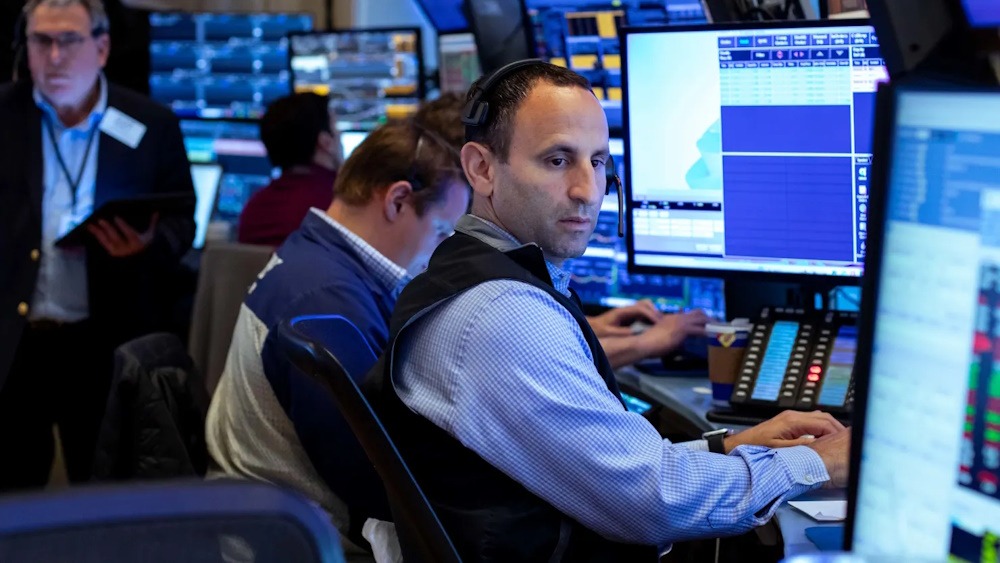
Dow futures remain predominantly above the flatline, as market participants direct their focus towards the imminent release of the crucial monthly nonfarm payrolls report. The data may yield new perspectives on the path of U.S. interest rates, given that traders are largely convinced the Federal Reserve will reduce borrowing costs at its upcoming meeting later this month. In other developments, OpenAI, the creator of ChatGPT, is said to be gearing up to manufacture its own artificial intelligence chip in collaboration with Broadcom.
Dow futures indicated a modest uptick on Friday, as market participants prepared for the forthcoming release of a highly-anticipated monthly employment report. As of 03:40 ET (07:40 GMT), the Dow futures contract exhibited minimal movement, while S&P 500 futures recorded an uptick of 10 points, translating to a 0.2% increase, and Nasdaq 100 futures rose by 87 points, reflecting a 0.4% gain. The primary indices on Wall Street experienced an upward movement in the previous session, with the benchmark S&P 500 notably achieving a new record closing high. The sentiment was supported by labor market data that reinforced expectations that the Federal Reserve will reduce interest rates at its forthcoming policy meeting this month. Data indicated that private-sector hiring decelerated in the previous month, while new applications for unemployment benefits increased beyond expectations — both serving as recent signals of a potential softening in the American employment landscape.
The figures acted as a precursor to the key event on this week’s economic calendar: the release of the August nonfarm payrolls report. Analysts have indicated that a soft or even tepid reading could effectively solidify expectations for a Fed rate reduction at the central bank’s September 16-17 meeting. According to CME’s FedWatch Tool, markets are pricing in a nearly 100% probability of a 25-basis point reduction in borrowing costs from the Fed’s current target range of 4.25% to 4.5%. Federal Reserve officials are encountering pressures regarding both aspects of their mandate: maintaining stable price growth and fostering maximum employment. However, recent remarks from policymakers suggest that bolstering the labor market may currently take precedence. Reducing interest rates may stimulate expenditure among both businesses and consumers, though it carries the potential risk of exacerbating persistent inflationary pressures. The ongoing discussion surrounding Friday’s report will be influenced by the repercussions of the previous release, which was not only surprisingly weak but also included significant downward revisions to the totals for June and May. The figures provoked the ire of President Donald Trump, who dismissed the head of the agency responsible for compiling the data, asserting — without evidence — that the report had been manipulated to undermine him politically. He subsequently appointed a loyalist to take over the position.
OpenAI is set to commence the production of its own artificial intelligence chip starting in 2026, collaborating with Broadcom, as reported by the Financial Times on Thursday, referencing sources knowledgeable about the initiative. The decision reflects OpenAI’s efforts to manage the escalating demands for computing power associated with its AI initiatives, concurrently aiming to diminish its dependence on Nvidia. Broadcom CEO Hock Tan on Thursday announced that the company secured a new, undisclosed customer committing to $10 billion in orders, with reports indicating that this customer is OpenAI. The creator of ChatGPT intends to utilize the new chip for internal purposes, rather than distributing it to external clients, according to the report by the FT. Last year, OpenAI initiated a collaboration with Broadcom concerning an AI chip; however, the timeline for mass production remained ambiguous. The FT report arrives shortly after Broadcom reported robust quarterly earnings and provided a positive forecast for the ongoing quarter. Broadcom’s shares experienced an increase of over 6% during after-hours trading.
The Trump administration is set to initiate the process of renegotiating the U.S.-Mexico-Canada free trade agreement, as reported by the Wall Street Journal on Thursday evening. The Office of the U.S. Trade Representatives is set to commence public hearings regarding the renegotiation of the deal, with an impending deadline of October 4 to finalize these discussions. The agency may issue a request for comment from companies and unions as early as this week, according to the WSJ, which referenced sources acquainted with the administration’s considerations. However, the consultations will merely represent the initial formal step in what is anticipated to be a protracted process of renegotiating the agreement that Trump endorsed in 2020. The USMCA agreement succeeded the 1992 North American Free Trade Agreement and stands as a significant trade accomplishment of Trump’s initial term in office. However, the president has somewhat compromised the agreement by imposing and subsequently reducing significant trade tariffs on Canada and Mexico this year.
Gold prices exhibited a lack of significant movement during early European trading, as expectations surrounding U.S. rate cuts maintained the yellow metal near its recent highs, while investors remained poised for the forthcoming nonfarm payrolls data. Bullion, in conjunction with broader metal prices, appeared poised for weekly gains, driven in part by the dollar’s decline amid increasing confidence in a reduction of borrowing costs in September. Reduced interest rates generally favor non-yielding assets like metals, as they diminish the opportunity cost associated with investing in this sector compared to government debt. Spot gold increased by 0.1% to $3,547.80 per ounce, whereas December gold futures remained largely stable at $3,607.82 per ounce as of 03:32 ET. Spot prices reached an unprecedented level of $3,578.80 per ounce earlier this week.
